Lightly smoky and full of umami, Mentsuyu is a Japanese soup base used in a multitude of noodle dishes. You can easily make it at home with sake, mirin, soy sauce, and katsuobushi (dried bonito flakes).
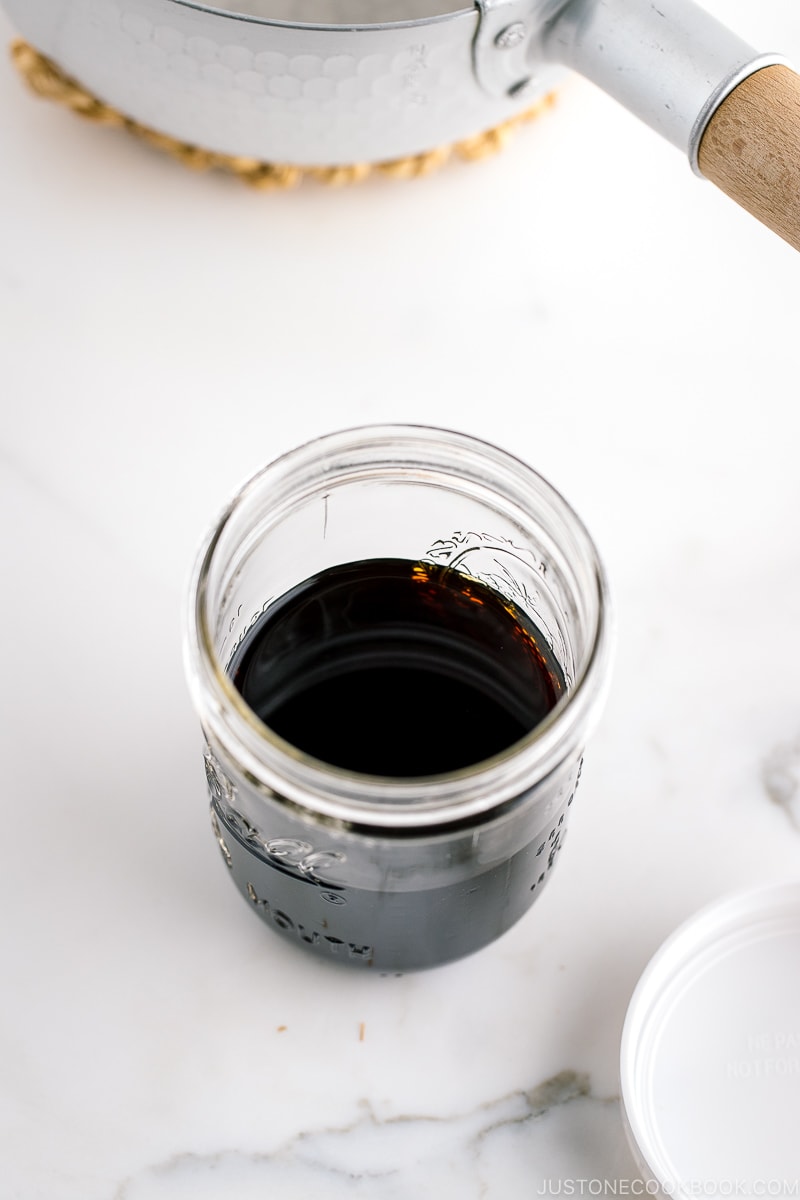
Mentsuyu (めんつゆ), or sometimes called Tsuyu (つゆ), is a Japanese soup base commonly used in soba and udon noodle dishes. Made from sake, mirin, soy sauce, kombu, and katsuobushi (dried bonito flakes), the flavor is delicate yet intensely savory.
Table of Contents
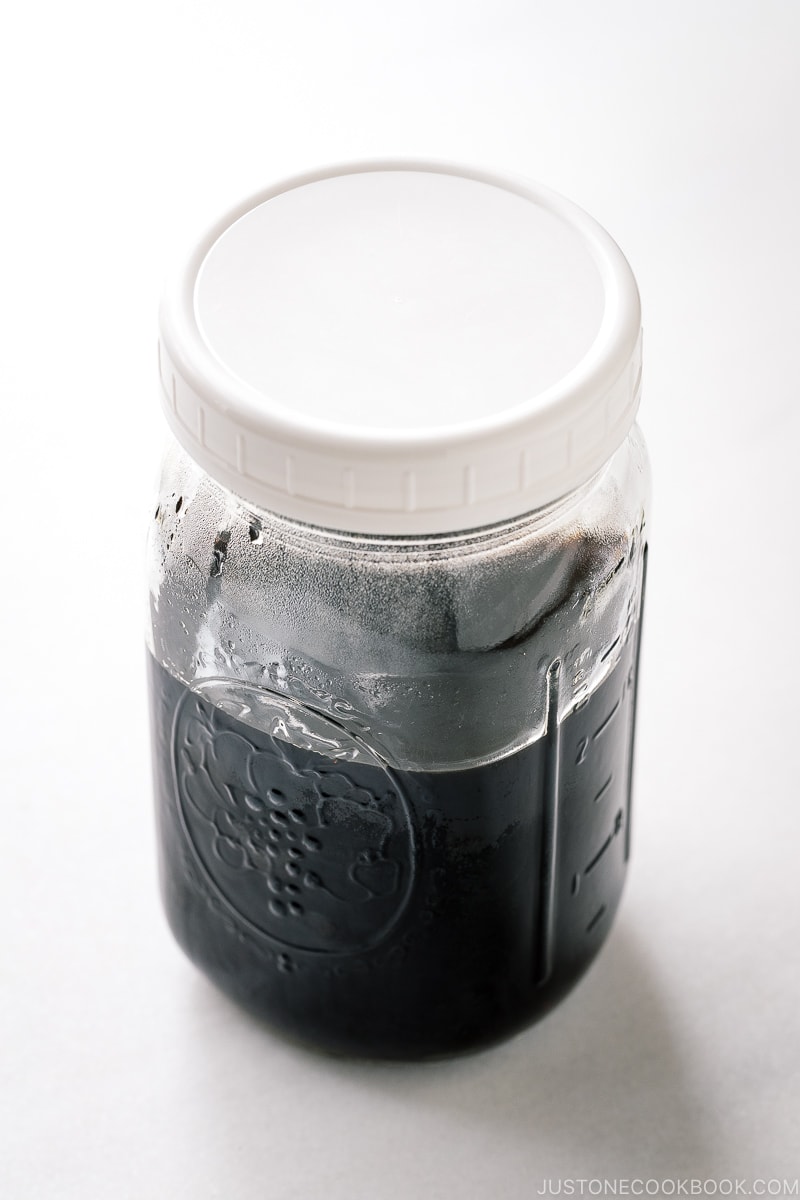
What is Mentsuyu (Tsuyu) for?
In Japan, we use Mentsuyu as a basic sauce or broth to flavor everything from noodle dishes, rice bowls, and hot pots to the tempura dipping sauce.
The multipurpose sauce gets a real depth of flavor and smokiness from the use of kombu and bonito flakes. As it happens, these two ingredients are the elementary components to make dashi—the Japanese soup stock that characterize the distinct flavor of Japanese food.
In this recipe, soy sauce contributes to the savory tones, and mirin imparts sweetness that ties everything together.
Making Mentsuyu at home is as easy as combining all the ingredients in a pot and letting it simmer down to a concentrated sauce. You can store it in a mason jar and keep it in the refrigerator for up to a month. The sauce will come in handy when you need it to season your favorite noodle dishes.
When ready to use, you just need to thin it out with water! The ratios of Mentsuyu to water will differ depending on the recipes.
Use Mentsuyu for Hot Noodle Soup

To use Mentsuyu in a hot noodle soup, dilute it with water, heat it up, then pour over boiled noodles. This hot noodle soup broth is called Kaketsuyu (かけつゆ).
Use Mentsuyu for Cold Noodle Dipping Sauce
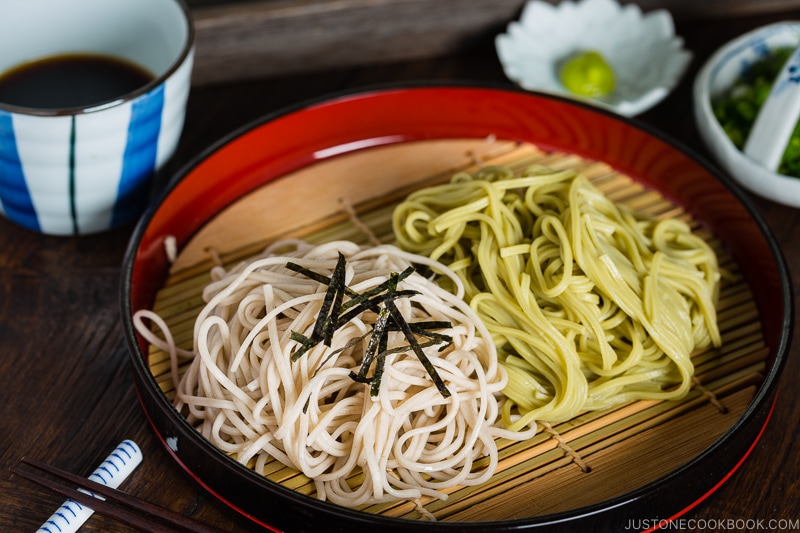
The Mentsuyu is diluted with water (sometimes no need to dilute), then serve with chilled noodles. This dipping sauce is called Tsuketsuyu (つけつゆ).
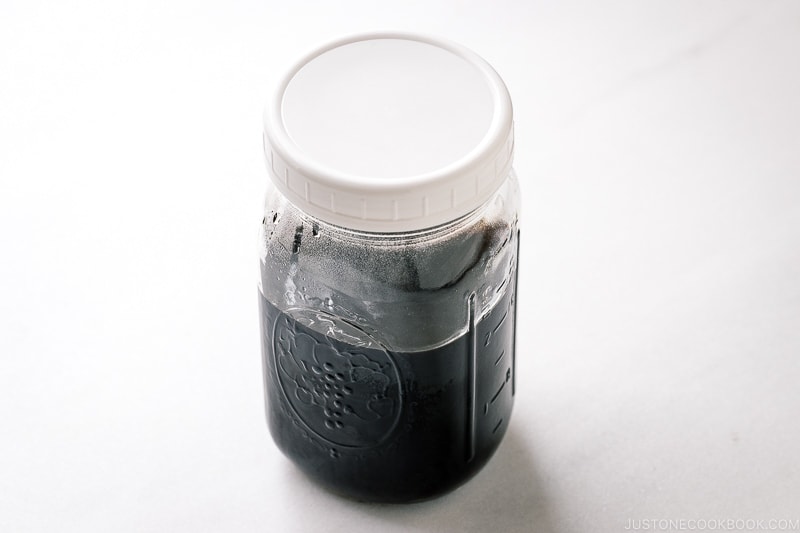
Convenient Store-Bought Mentsuyu Bottles
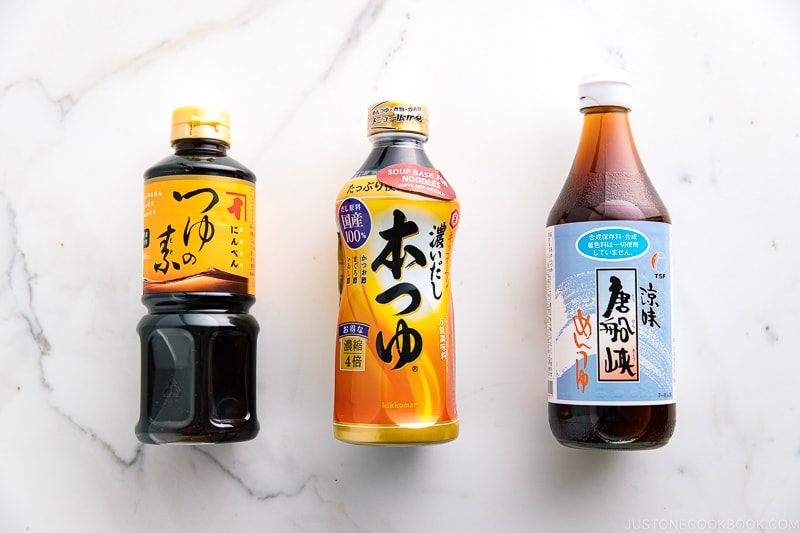
For convenience, you can purchase pre-made Mentsuyu from Japanese (or Asian) grocery stores or online.
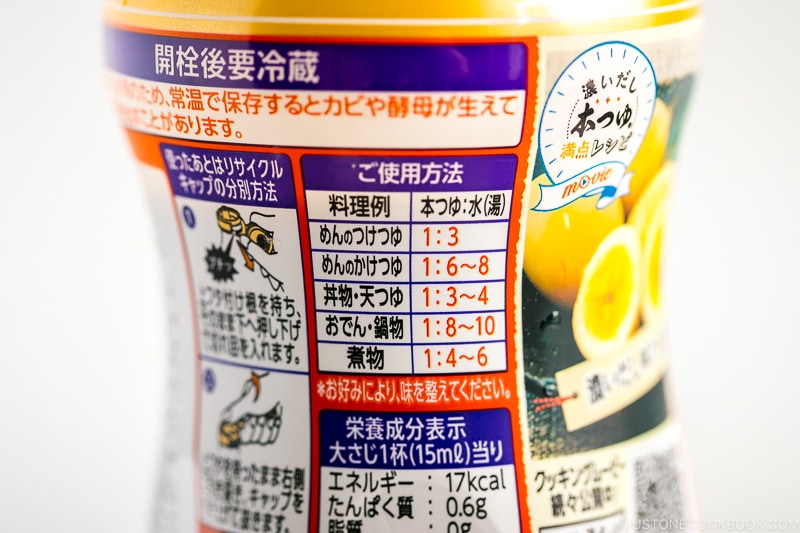
Each brand has different instructions for diluting the Metsuyu. Find the usage guide on the bottle that looks like this. You can learn more about the Ratio of Tsuyu to Water on this page.
Use Mentsuyu in These Recipes!
- Cold Tanuki Udon
- Tsukemen
- Zaru Soba
- Yaki Udon
- Mushroom and Tuna Japanese Style Pasta
- Hiyayakko (Japanese Cold Tofu)
- Kitsune Udon
- Negitoro & Avocado Donburi
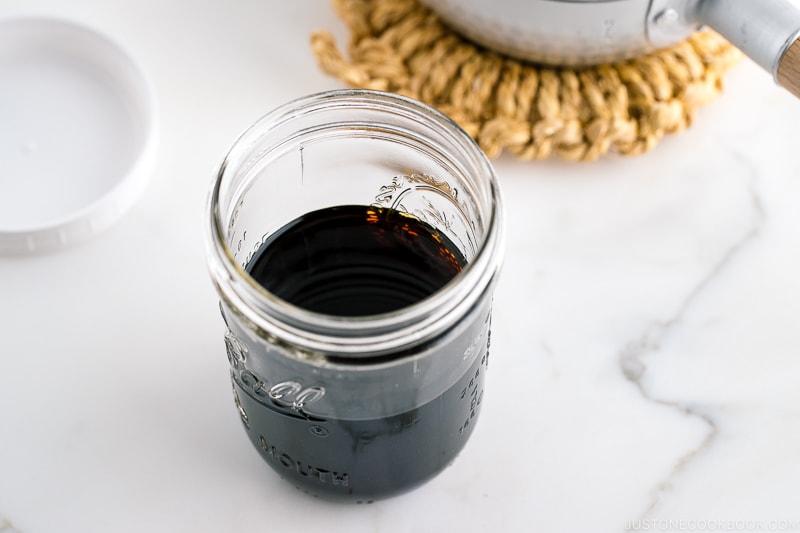
Wish to learn more about Japanese cooking? Sign up for our free newsletter to receive cooking tips & recipe updates! And stay in touch with me on Facebook, Pinterest, YouTube, and Instagram.
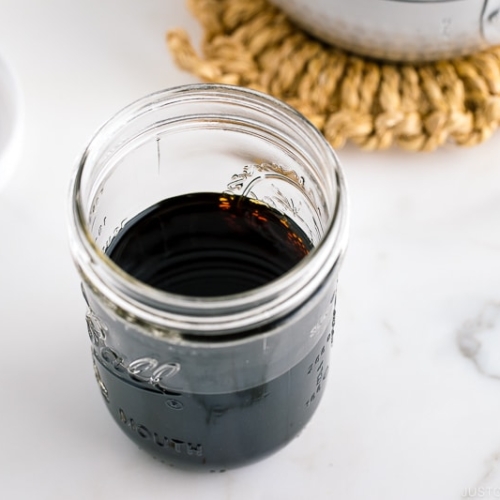
Homemade Mentsuyu (Japanese Noodle Soup Base)
Video
Ingredients
- ½ cup sake
- 1⅛ cup mirin
- 1 cup soy sauce
- 1 piece kombu (dried kelp) (5 g; 2 x 2 inches or 5 x 5 cm per piece)
- 1 cup katsuobushi (dried bonito flakes) (packed; omit for vegetarian/vegan or substitute 2 dried shiitake mushrooms)
Instructions
- Gather all the ingredients.

- In a saucepan, add ½ cup sake, 1⅛ cup mirin, and 1 cup soy sauce.

- Add 1 piece kombu (dried kelp) and 1 cup katsuobushi (dried bonito flakes).

- Slowly bring it to a boil over medium-low heat.

- Then, reduce the heat to low and simmer for 5 minutes. Then turn off the heat and let it cool.

- Pass the mixture through a fine-mesh sieve. Tip: Reserve the kombu and katsuobushi for another use (see below).

To Serve
- This Mentsuyu is concentrated. In general, the mentsuyu-to-water ratio should be 1:2 for a dipping sauce for cold Zaru Soba or Tanuki Udon and 1:4 for Udon Noodle Soup or Soba Noodle Soup. Please adjust the taste of your dipping sauce or soup broth by adding more mentsuyu or water.

To Store
- You can store the Mentsuyu in a mason jar in the refrigerator for up to a month.

To Repurpose the Spent Katsuobushi and Kombu
- Save the spent kombu and katsuobushi in an airtight container and store it in the refrigerator for a week or in the freezer for up to a month.

- Repurpose the spent katsuobushi and kombu to make Homemade Furikake (Rice Seasoning).

Nutrition
Editor’s Note: This post was originally published on July 16, 2013. It’s been republished on May 5, 2022, with updated step-by-step and final images.
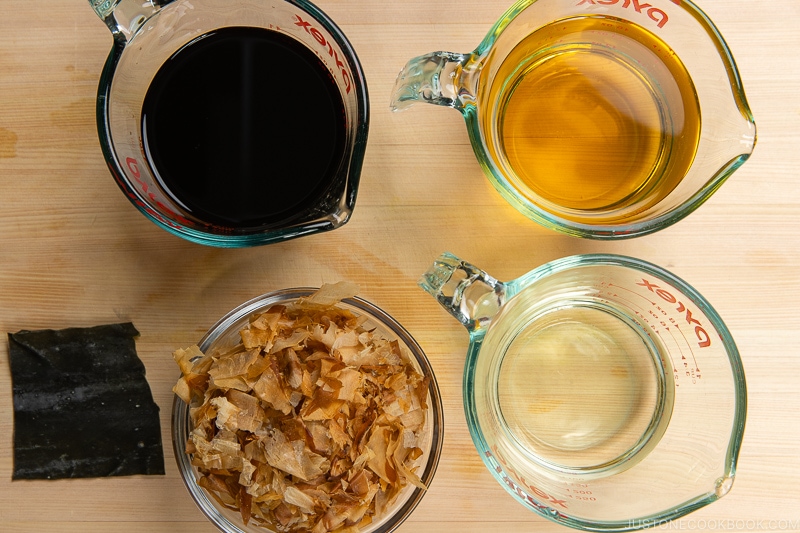
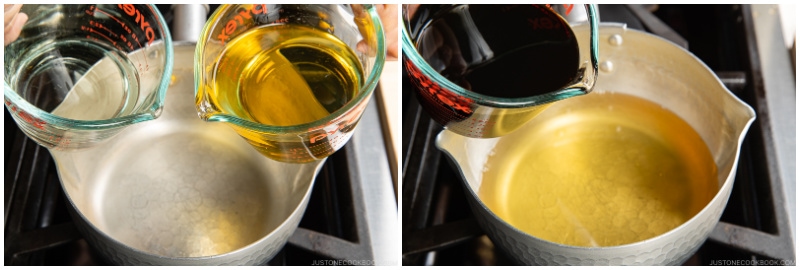
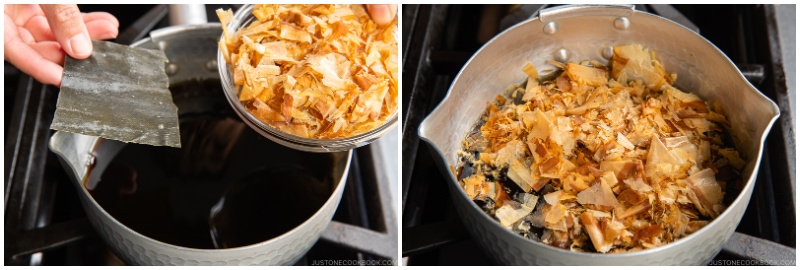
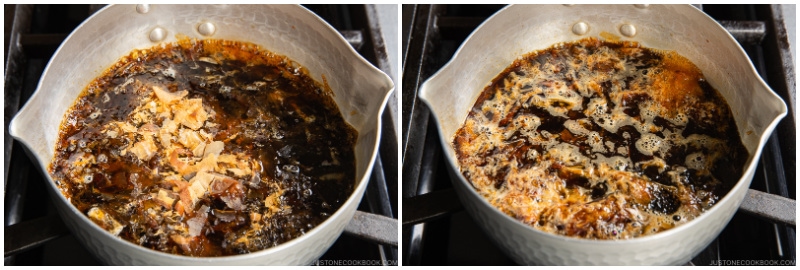
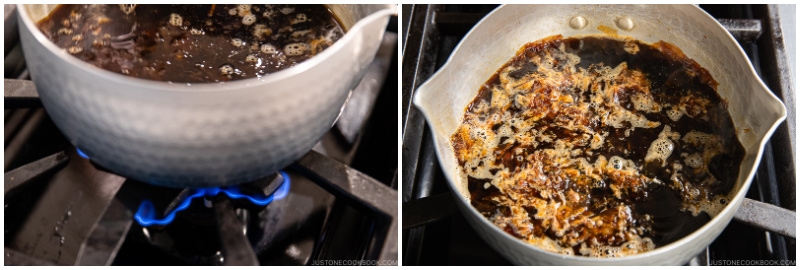
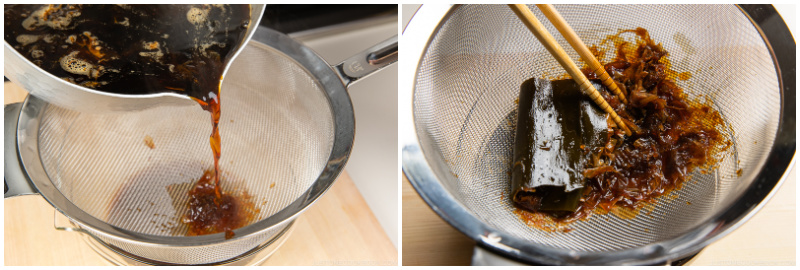
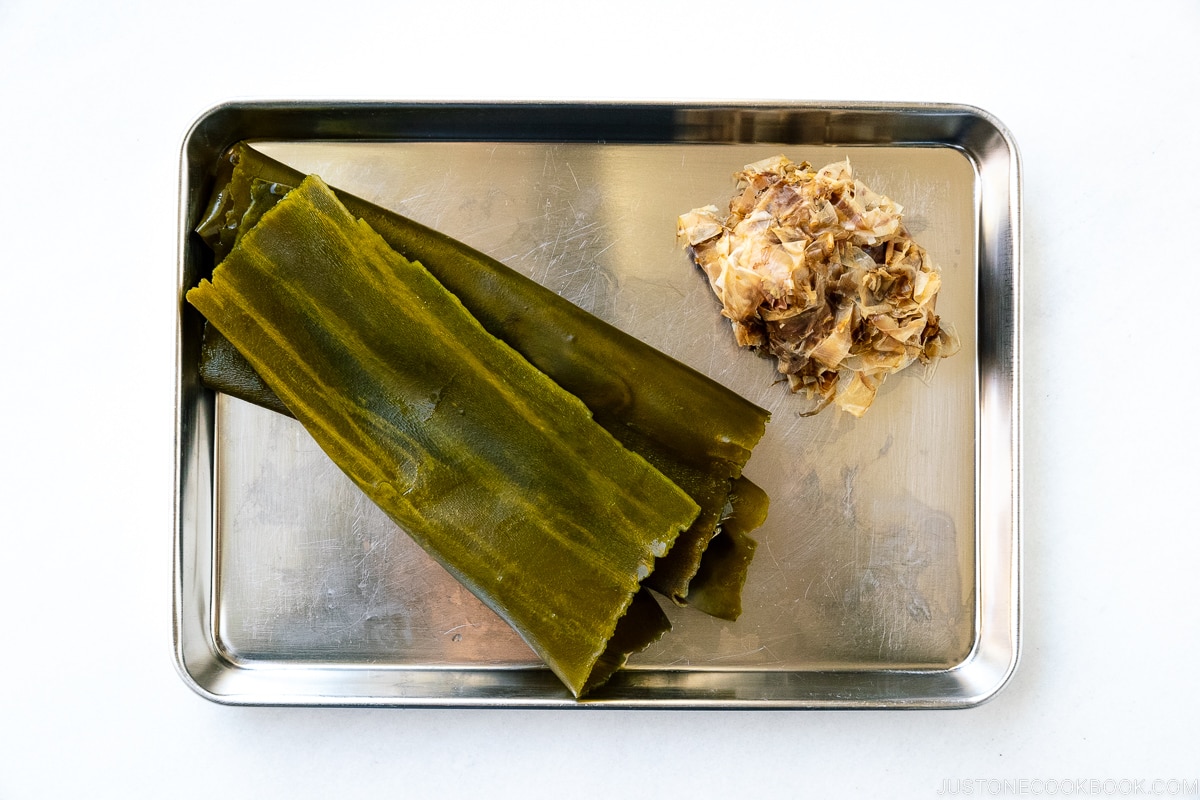
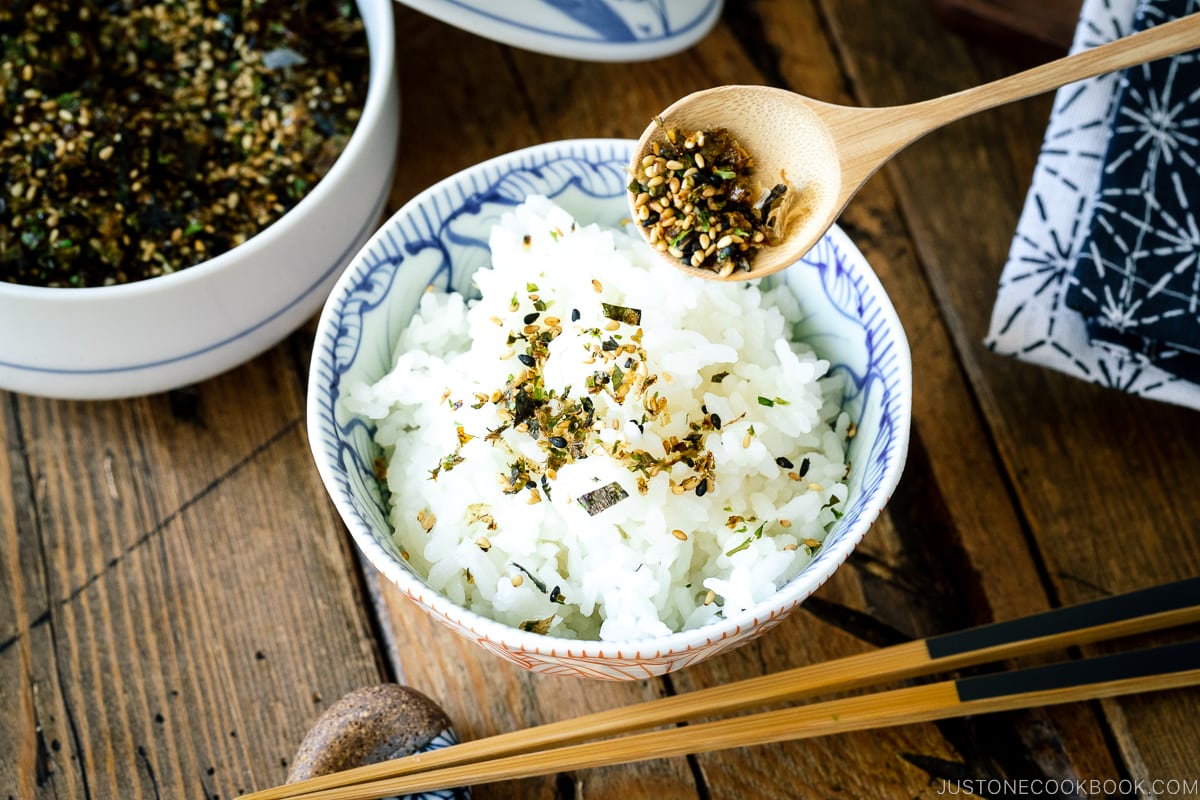










I really appreciate that you offer the choice of a store bought items as well as recipes for fresh homemade ingredients for your recipes, I definitely will follow and try your recipes, their making my mouth water, I love this kind of food. Local girl from Oahu, Hawaii
Hi Stephanie! Thank you for reading Nami’s post and for your kind feedback!
Nami and JOC team are so happy to hear you enjoy our content. We hope you enjoy the homemade taste! Happy cooking! 😊
Hello Nami-san! I tried many times this (and loads more) recipes 🙂 they are all so good!
i was wondering what can I do for a 2 year old child, can I give her this mentsuyu? Should I dilute it more for her? Any tips in general for kids? I love to cook japanese food, but now she started to eat with us, so she will want to try everything!
thank you 🙂
Hi Vedrana!You can, but I’d dilute even more so it has a subtle flavor but is not salty. I always took out some portions from our meal before seasoning and seasoned separately for my kids when they were younger. 🙂
Hello Nami. Amazingly I have all the ingredients to make this. I eat a lot of Ramen and Udon noodles but in vegetable or chicken broth, with vegetables. I can hardly wait to try with this broth. Thank you so much for sharing!
Hi MsLinda, Thank you for reading Nami’s post and trying her recipe!
We hope you enjoy this homemade Mentuyu soon.
Happy Cooking!
Hi Nami, I’ve tried many of your recipes, thank you for all the easy to follow pictures and instructions. As I was making this today, the question I’ve had the back of my mind just got louder and louder. So I thought maybe you will have some insights into it as you have children yourself. Japanese cooking seems to use alot of sake and mirin (which contains alcohol). I understand the alcohol content will eventually evaporate during the cooking process, but that takes longer cooking time. For example, this recipe is prepared in 15 mins, cooking time is less than that. What are your thoughts in having children consume many recipes that contain sake/mirin day in and day out?
Hi Mandy! Thank you very much for reading Nami’s post and trying her recipe!
In general, we do not offer Mirin or Sake included meals to babies. https://www.justonecookbook.com/baby-food-in-japan-readers-questions/
And for those concerned, recommend swapping with non-alcoholic Mirin (みりん風調味料), water, or dashi to small children.
We hope this helps!
Can this be used as a tare for ramen?
Hi Nick, Thank you for trying Nami’s recipe!
It depends on which recipe, but if the recipe called for soy sauce flavored, it might work well as an addition to the broth.
We hope this helps!
This looks great, but, been a vegan, how can bonito flakes be substituted in this recipe?
Hi Montse, Thank you very much for reading Nami’s post and trying her recipe!
You can substitute with Shiitake or dried Shiitake for this recipe.
We hope this helps!
Nami, should we use Hon-Mirin or Aji-Mirin for this recipe?
Hi Joanne, Thank you very much for trying Nami’s recipe.
The Aji-Mirin includes another ingredient including salt, so we recommend using Hon-Mirin.
We hope this helps!
I love keeping a bottle of mentsuyu in the fridge, but I haven’t been anywhere near a Japanese or Asian market in ages, so this is one of those “luxuries” that’s fallen out of my life. Using it is the only way I’ll eat soba noodles, and I sometimes use it to replace the seasoning packets in instant ramen for just-like-a-Japanese-restaurant flavor.
I stumbled on this when looking for anything to do with soba, and I’m so glad I did! I happened to have a few single-serve packets of bonito (and I don’t buy them often, so I’m stingy too…) so I did half bonito and then a little bit of dashi granules. I also substituted white wine for sake. It might be different side-by-side, but the result was indistinguishable from the taste of bottled mentsuyu in my memory.
Mentsuyu is basically a wonder sauce- it’s so versatile, and it ought to be stocked in regular grocery stores next to the Pocky… But this recipe recreated this amazing stuff from basic, mostly dry ingredients, and also lets me control the amount so I don’t have half a bottle in my fridge forever lol And of course it’s so delicious! My soba is so lucky to have a bath in this good stuff 😛
Hi Home Cook! Thank you very much for trying Nami’s recipe and for your kind feedback!
We are so happy to hear you enjoyed homemade Mentsuyu!
With Mentsuyu, you can make many wonderful dishes. We hope you check out the other recipes too. https://www.justonecookbook.com/search/?q=mentsuyu
Happy Cooking!
JOC has been my go-to site for authentic Japanese recipes. Thank you Nami for such a thorough, wonderful work. Very detailed recipes and beautiful photos!
Hi Preci! Nami and all of us at JOC are so glad to hear that you’ve been enjoying the recipes and everything else that we share. It means so much to us.
Thank you very much for your kind feedback!🥰
Thank you, Nami, for always taking the trouble to share more than just recipes. I learn something new every time I read your post. Have a great week!
Hi Aziah! Thank you very much for reading Nami’s post and for your kind feedback!
Nami and all of us at JOC are so glad to hear that you’ve been enjoying the recipes and everything else that we share. It means so much to us.
Happy Cooking!
thank you namiko for that recipe your so kind for sharing it,,,take care and God bless
Hi niel, We are so happy to hear you enjoyed Nami’s recipes!
Thank you very much for trying her recipes and for your kind feedback. Happy Cooking!💞
Hi Nami, thank you for the recipe. Is it possible to freeze and use it later?
Hi Jinny! Thank you very much for trying Nami’s recipe!
Yes, you can freeze Mentsuyu. Use ice cube trays or small airtight containers for individual use are ideal.
We hope this helps!
Came across a bottle of this I made a year or two back and the difference ageing makes is nothing short of astounding! Like tosa joyu it improves significantly with age and keeps equally well. Thanks Namiko!
Hi Lo, Thank you very much for your kind feedback!
We are glad you enjoyed it. Unlike store-bought Mentsuyu, homemade ones don’t typically last long (usually up to a month) due to the low sodium in the mixture (only soy sauce ratio). Make sure there is no mold etc before your consumption. 🙂
Hi, what if i dont have kombu? Can I leave it out or does it have any substitutes?
Hi Yan, Thank you very much for reading Nami’s post!
If you don’t have Kombu, you can increase the amount of Katsuobushi or use dry Shiitake or Niboshi/Iriko (dried anchovy) to achieve more depth in the flavor.
We hope this helps!
Hi! so I was wondering if I can substitute katsuobushi with shiitake mushrooms? Basically combine kombu + shiitake? I’m severely allergic to both fish and shellfish, so I have to find alternatives.
Hi Dani, Thank you very much for trying Nami’s recipe!
Yes, you can use Kombu and Shiitake. However, we recommend simmering the sauce from the beginning instead of bringing it up to boiling and adding a few more minutes to the cooking time. So Shiitake would not add a bitter taste to the Mentsuyu sauce.
We hope this helps!